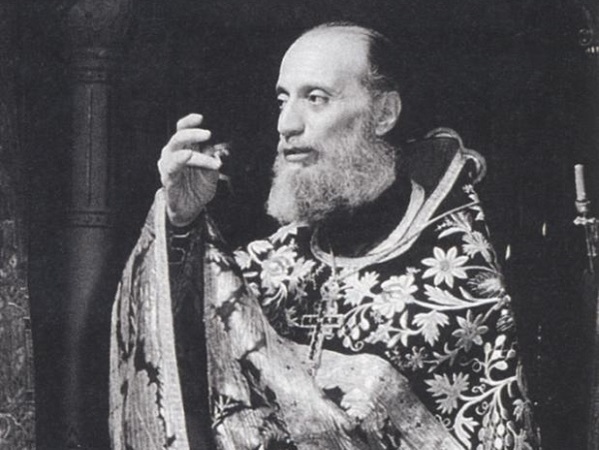How does the Holy Trinity create a person?
7 July 2019It’s been noted by theological scholarship on more than one occasion that, in Orthodoxy, dogma and ethos, theory and practice, faith and life are indissolubly bound together. Every invitation to spiritual struggle has a powerful dogmatic foundation and vice versa: the spiritual life of the Church of love and humility is what produces, in a sense, the dogmatic conscience of each member individually and of the Church as a whole.
Elder Aimilianos follows this rule closely, being himself a part of the Patristic tradition in the Holy Spirit. This is clear from a large part of his teaching. But there’s one point where this bond between dogma and ethos is clearer and more detailed, one might say. This is the beginning of the book Λόγος Περί Νήψεως: Ερμηνεία στον Άγιο Ησύχιο (A Discourse on Vigilance: Interpretation of Saint Isyhios) [1]. In pages four to six, before proceeding to delve more deeply into the practice and theory of the core of the ascetic life, of vigilance, Elder Aimilianos manages to condense the Biblical and Patristic teaching on the Holy Trinity and on God’s creation of the human person.

Both ancient and modern Fathers of the Church are profoundly aware that the ascetic and moral life of Christians is of an ontological and moral nature. It’s not merely conforming to rules and commands, nor is it a state of moral heteronomy or subjugation through ‘blind’ obedience to the divine commandments. The Christian ethos has its roots in profound knowledge, which is preserved by the experience of the ecclesiastical body: that the creation of a person is arranged and brought about by the three Persons of the Trinity Themselves.
Elder Aimilianos writes:
‘At one exceptional and unique moment in history, the heavenly Father wished to create the material world. Once this had been done, He then went on to make the human body, in collaboration with the other two Persons of the Holy Trinity, and breathed the ‘breath of life’ into it. So God’s creation became ‘a living being’ [2]. God then ceased merely to hover above the waters [3] and entered into the created and material elements and living things. He dwelt in a unique, supreme being who became the king and the reason for the creation. Now the reason for the creation is God Himself. From that moment, the conjunction, the path towards identification and union with God became inevitable, and it’s now impossible to conceive of the human person, the image of the invisible God, without the Holy Spirit.
So the Holy Spirit, as one of the Persons of the Holy Trinity, collaborates in the birth of every person. Together with the Father and the Son, He gives to the maternal womb the material which is taken from the father and mother, and the embryo thus conceived is flesh, dust. We people give birth to dust: we’re dust and return to dust [4]. To this dust, the parents give all the capacities and characteristics of their personalities, they give themselves, the image of their flesh.
What the heavenly Father did to the first human person, He also does at the birth of every one of us, the difference being that then He first created the dust and afterwards breathed into it the Holy Spirit, whereas now the Holy Spirit enters the person as soon as conception occurs. So from the very first moment, the embryo is alive and is a person, because it’s received the inspiration of the Holy Spirit. It has rational control, is a complete image of the divinity and, until its last moments, bears the features of divine and human nature, unfailingly and unabatedly. There is also internal communication within the person between the human and divine nature, as there is in Christ.
It follows, then, that at everyone’s birth there are, on the one hand, divine actions and, on the other, a human contribution, in accordance with the ancient saying and will of the Godhead: ‘increase and multiply’[5]. The husband and wife, one flesh- ‘you shall be one flesh’ [6]- communicate with the Holy Spirit, and the all-powerful Son brings everything together, puts everything into the womb of the woman and in this way we have a complete person, both God and human. The new persons, created by God and created for God, are endowed, at baptism, with divinity, with the charismatic life, at which point the Holy Spirit becomes the inheritance of their existence. From then on, they’re constantly being challenged internally by the Holy Spirit and also project from themselves the sparks, the light of the divinity. In this way, the dust of the earth becomes a radiant life, through vigilance’.






